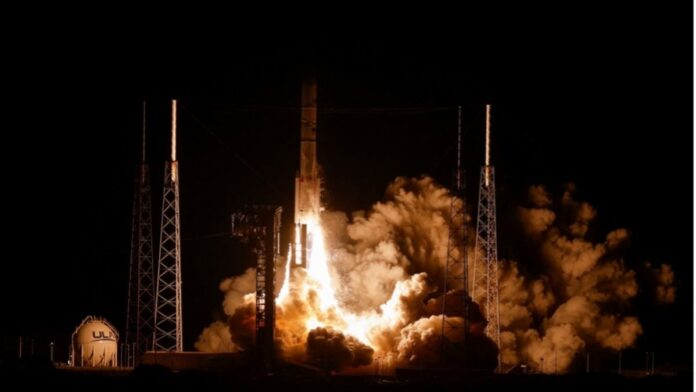Unless you count the Wall Street Journal’s report on Elon Musk’s drug use and the potential implications for SpaceX, the biggest story in the space industry this week was the takeoff of United Launch Alliance’s Vulcan Centaur rocket. Monday’s successful launch was welcome news for the company and the US Space Force, which is relying on the rocket to take its spy satellites and other spacecraft into space in the future.
The launch wasn’t smooth for all parties, however. The Peregrine lander, a lunar-destined spacecraft built by Astrobiotic Technology, faced troubles only a few hours after separating from the rocket as it struggled to stay oriented in the right direction. The issue, which could stem from a malfunction with the propulsion system that caused a fuel leak, has made it impossible for the lander to make a soft touchdown on the Moon. Engineers with Astrobiotic are now working to improvise an alternative trajectory that could still allow some of the lander’s payload to conduct scientific measurements.
Another payload sent by Celestis is also off to a rocky start. Celestis, established in 1994, has sent over 1,000 cremated remains into space as a part of its Memorial Spaceflight Services. On behalf of Celestis, the Vulcan rocket was carrying the remains of hundreds of people—for $12,995 per gram—most of which are destined to spend eternity orbiting the Sun. But 62 sets of remains, including ashes from sci-fi writer Arthur C. Clarke and Star Trek creator Gene Roddenberry, are aboard the Peregrine lander. A similar service provider, Elysium Space, also has a payload aboard the Peregrine.
Aside from the Peregrine’s own complications now, the plans to leave human remains on the Moon have also been harshly criticized by the Navajo nation. “The moon holds a sacred place in Navajo cosmology,” the president of the Navajo Nation, Buu Nygren, said in a statement to CNN. “The suggestion of transforming it into a resting place for human remains is deeply disturbing and unacceptable to our people and many other tribal nations.” Celestis CEO Charles Chafer rejected the Navajo’s concerns, calling them not substantive, while Astrobiotic CEO John Thornton expressed wishes to continue the dialog with the Navajo for future missions.
This isn’t the first lunar cremation controversy. After NASA left the remains of a planetary geologist on the Moon in 1999 during the Lunar Prospector mission, the agency was similarly criticized by the Navajo and agreed to future consultations.
It’s possible the remains will not even make it to the Moon this time. But the development does seem to be one sign we’re entering a new Wild West era of the space age. Space missions that were once squarely in the domain of governments are now open to private companies that are only accountable to themselves (and shareholders if they have any).
🌕🌖🌗
IMAGERY INTERLUDE
ULA’s Vulcan rocket launches early Monday morning from Cape Canaveral.
📡 📡 📡
SPACE DEBRIS
A US labor agency has accused SpaceX of unlawfully firing employees and violating workers’ rights in an open letter. The accusation comes six months after the US Justice Department sued the company for discriminatory hiring practices.
China just finished a commercial launch pad in Hainan province. It will be able to launch liquid propellant rockets.
NASA and the UAE will collaborate on an airlock. It will serve as a passageway between pressurized crew quarters and space aboard Gateway, the future Moon-orbiting platform.
SpaceX is again launching communication satellites for outside parties. This time it’s for India’s state-run NewSpace India Ltd. SpaceX also is at work launching Starlink in India, which recently passed new telecommunications legislation that could benefit SpaceX-owned satellite internet service.
The next astronauts to make it to the Moon now won’t get there until 2026. NASA moved back the date of its Artemis 3 flight by a year due to development delays with contractors.
This week’s Space Business newsletter was authored by science writer and photographer Mara Johnson-Groh, and edited by Heather Landy.
Last week: Busy year ahead
This was issue 211 of our newsletter. Hope your week is out of this world! Send tips, and informed opinions to [email protected]. (Please do not send cremated remains or faulty landers.)


